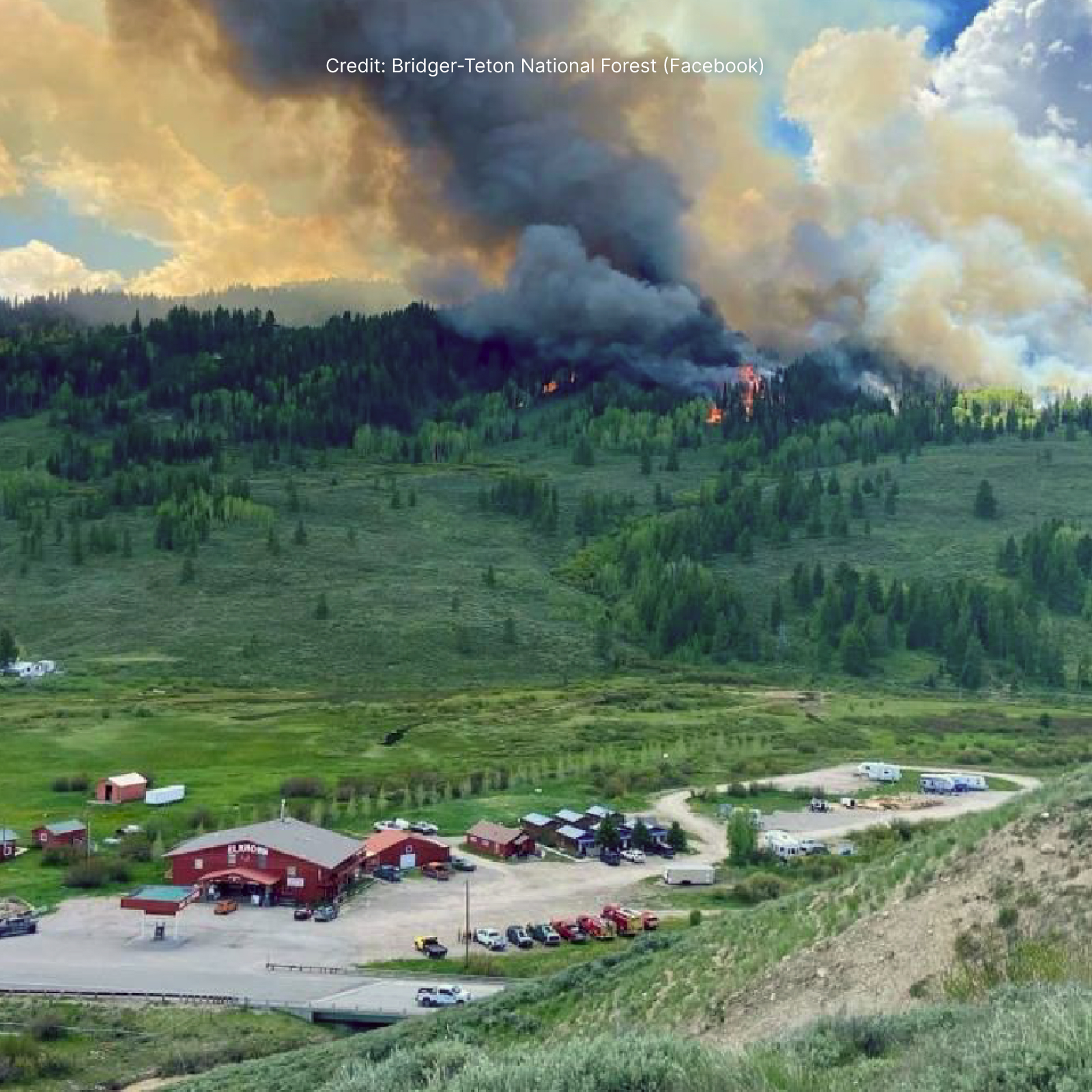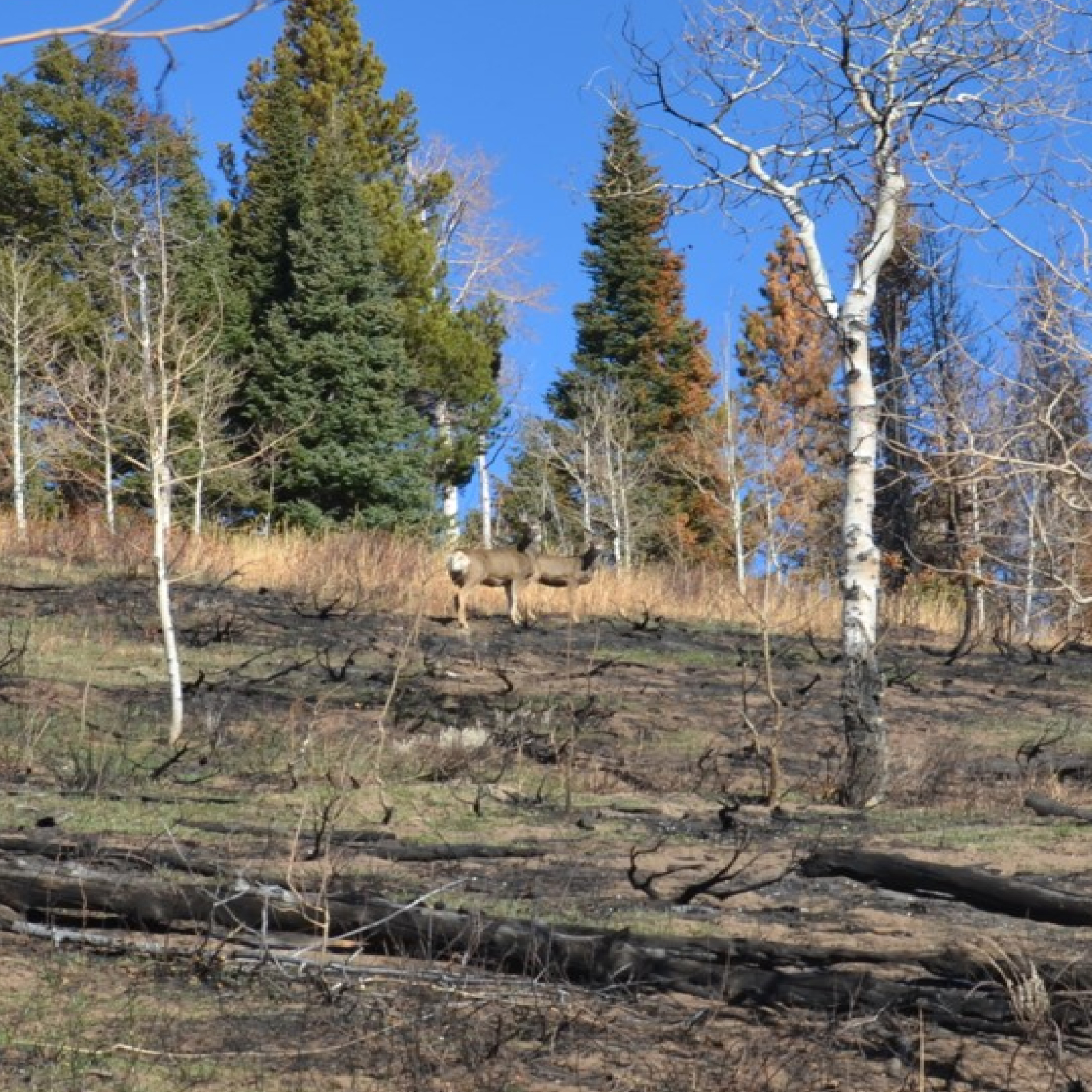THE SOLUTION
Conduct prescribed burns and study their impact.
To remove conifers and encourage aspen regeneration, forest managers conduct prescribed burns and mechanical thinning.
How these actions — vs. naturally occurring wildfires — impact non-game species isn’t well understood. Yet. Working together with several organizations, we have established multiple banding stations, conducted bird surveys, and placed game cameras over the 11,000-acre study area to monitor animal habitat use before and after treatment.


